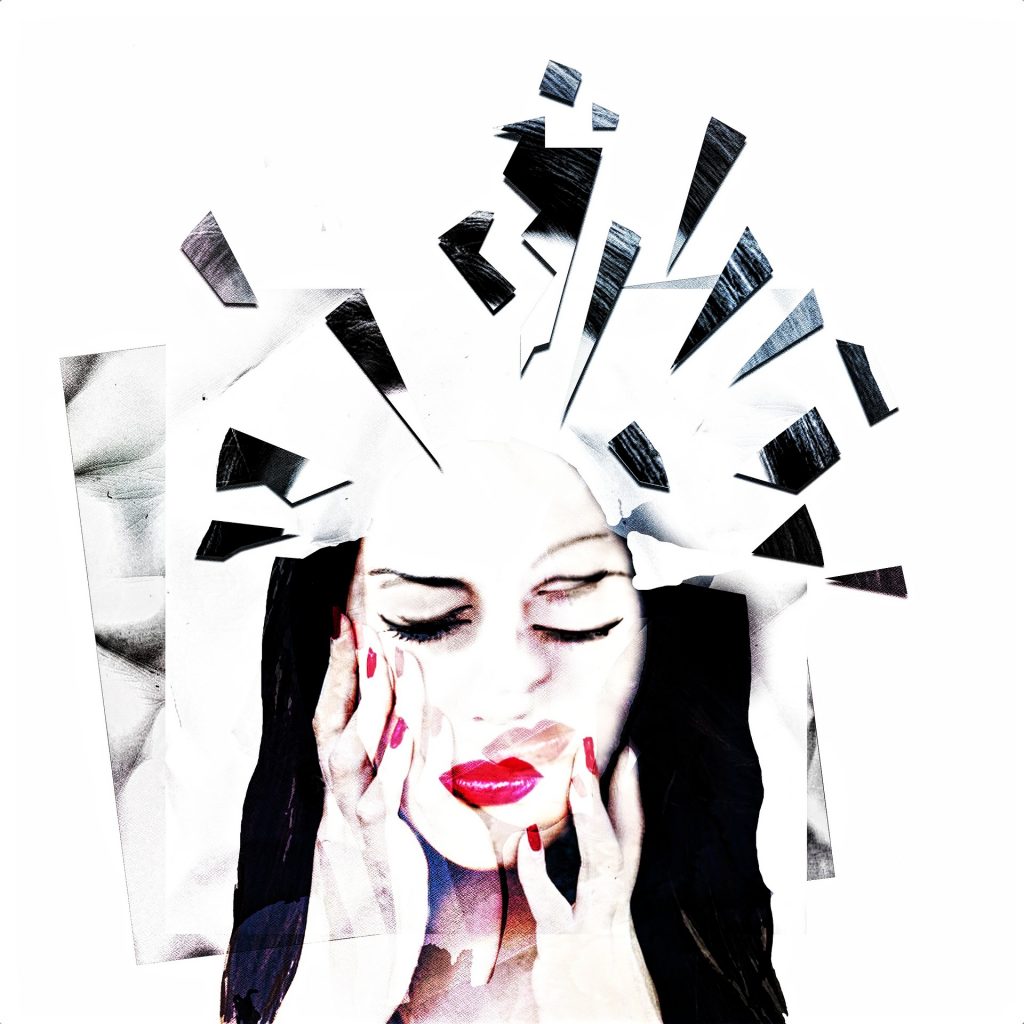Fantasy Prone Personality & Maladaptive Daydreaming.
By: Quenell Redden
Education & Learning, Feature Articles, Health & Welfare, Psychology,

Every once in a while, many of us may find ourselves lost in a daydream. For some, this can happen more often, for longer periods, and can disrupt their daily lives. Those who tend to drift off into these alternate realities may be categorized as having Fantasy Prone Personality (FPP) or Maladaptive Daydreaming (MD) disorder. Currently, there is little research aimed at understanding the causes, diagnosis, and treatment of these two disorders, and both are not officially recognized by the Diagnostic and Statistical Manual of Mental Disorders (DSM)-The handbook for mental health disorders used by a good deal of mental health care professionals around the world.
Throughout this article, we explore the proposed symptoms, measurements, and existing information on both fantasy-prone personality and maladaptive daydreaming. Using this knowledge, we can then make some inferences about their effects on people living with these disorders.

Fantasy Prone Personality Maladaptive Daydreaming: What is Fantasy Prone Personality?
Of the two, fantasy-prone personality (FPP) has little research explaining its causes, diagnosis, and treatment. Nonetheless, a fantasy-prone personality is described as “an extensive and deep involvement in fantasy” (Rhue & Lynn, 2006). This personality type was identified by researchers S.C. Wilson and T.X. Barber in 1981, based on research conducted by Josphenine Hilgard, who observed people’s susceptibility to hypnosis (Rhue & Lynn, 2006). They believed in a connection between those who were susceptible to hypnosis and those who indulged in such vivid and extensive fantasies. The researchers found that those who were able to undergo hypnosis were more likely to easily create alternate fantasies for extended periods (Rhue & Lynn, 2006). They also outlined 14 distinct characteristics they found were linked to fantasy-prone personality.
14 Characteristics of FPP
Below are the 14 characteristics that have been linked to prone personality (Rhue & Lynn, 2006).
1. Being susceptible to hypnosis
2. Having numerous imaginary friends
3. Fantasying frequently as a child
4. Adopting a fantasy identity
5. Experiencing imagined sensations as real
6. Vivid sensory perceptions
7. Reliving past experiences
8. Claiming psychic powers
9. Noting out of body or floating experiences
10. Claiming to receive communications from spirits, monsters, etc.
11. Claiming to be involved in “healing.”
12. Encountering apparitions
13. Experiencing hypnagogic hallucinations
14. Experiencing hypnagogic imagery like spirits or monsters

Fantasy Prone Personality Maladaptive Daydreaming: What is Maladaptive Daydreaming (MD)?
Professor Eliezer Somer at the University of Haifa in Israel is credited for identifying Maladaptive Daydreaming (MD). MD refers to an individual’s ability to daydream, which interferes with their perception of reality and function. Often, people with maladaptive daydreaming are aware of the specific moments in which they entered their fantasies and preferred it to their real-world experiences (Cirino, 2018).
Daydreaming can be an interesting way for us to pass the time, it can even be our temporary escape from reality. However, it may become problematic when those daydreams start to interfere with our ability to function. Below is a graphic analyzing the cycle of maladaptive daydreaming and how it differs from typical daydreaming.

Thehelpugive- (The Maladaptive Daydreaming Vicious Cycle 2020)
This graphic outlines the cycle that occurs with maladaptive daydreaming and further highlights how maladaptive daydreaming can be problematic. Typically, a maladaptive daydream starts with a traumatic event or experience and turns into an individual creating an alternate reality different from the current circumstance they are in. These daydreams can last anywhere from a couple of minutes to a couple of hours. These alternate escapes can cause the individual to be isolated from their peers, family, and ultimately society which can worsen the real-life situation of that individual. If these circumstances worsen, the individual may choose to further engage in daydreaming, which continues to disrupt their life. Thus, becoming a cycle that causes harm to the individual and can be characterized as maladaptive.
Methods Assessing Maladaptive Daydreaming
Since there is no official recognition of MD as a mental disorder according to the DSM, there is no official method to assess and diagnose this disorder. However, Professor Somer developed a rating scale known as the Maladaptive Daydreaming Scale (MSD) that is 14 parts long and rates the five core characteristics of maladaptive daydreaming (Cirino, 2018). These five characteristics are the duration and detail of the daydream, the individual’s ability to control their dream, the amount of distress from daydreaming, an individual’s perceived benefits, and the amount of interference the daydreaming has on the individual’s life (Cirino, 2018).
Correlation Between MD and other Psychotic Disorders
Furthermore, people who experience maladaptive daydreaming may also be diagnosed with schizophrenia because schizophrenia is known to induce fantasies in those who have been diagnosed with this disorder. However, Professor Somer argues that maladaptive daydreaming should be different from schizophrenia and similar psychosis because those who experience MD typically are aware of their movement away from reality (Cirino, 2018). Additionally, maladaptive daydreaming has been associated with other mental disorders like attention deficit hyperactivity (ADHD), Depression, and Obsessive-Compulsive Disorder (OCD). There is little understanding of why these disorders are correlated, but many researchers speculate it is because of some of the symptoms associated with maladaptive daydreaming. For example, some people who experience maladaptive daydreaming may also have an overwhelming need to daydream and enact repetitive movements while doing so (Cirino, 2018). These symptoms of repetition and compulsion are often exhibited in those diagnosed with Obsessive-Compulsive Disorder (OCD).

Differences Between FPP and MD
Fantasy prone personality and maladaptive daydreaming can present similar symptoms and are often linked to one or more other psychological disorders (e.x. schizophrenia). Although, the main difference between the two is that people with FPP often do not recognize the difference between their fantasies and reality. Whereas, with maladaptive daydreaming, people are usually aware they are daydreaming (Cirino, 2018).
Making Inferences about FPP and MD
Although the DSM does not recognize fantasy-prone personality and maladaptive daydreaming as mental health disorders, these are two very real disorders that can have detrimental effects on those who experience them. There is a need for more understanding of how these disorders occur and how they can be treated. Moreover, there is a need to understand how they interact with other psychological diagnoses. The need for more information is crucial to the addition of these disorders in the DSM. The more we know about these disorders, the more likely it is for treatments to be developed to help those experiencing these disorders live more manageable lifestyles.
Works Cited
Cirino, E. (2018, December 13). Maladaptive Daydreaming: Scale, Symptoms, and Treatments. Healthline:
The Maladaptive Daydreaming Viscous Cycle . (2020). photograph:
Rhue, J. W., & Lynn, S. J. (2006, April 28). Fantasy Proneness: Developmental Antecedents. Wiley Online Library:
Similar Posts –
THE 5 W’S EXPLAINING VIKTOR FRANKL’S LOGOTHERAPY. Click here to read the full post.
THE INTERACTION BETWEEN SELF GROWTH AND PERSONALITY DEVELOPMENT. Click here to read the full post.
BENEFITS OF THERAPEUTIC HUMOUR AND A HAPPIER LIFESTYLE. Click here to read the full article.
Tags: Diagnostic and Statistical Manual, DSM, Fantasy Prone Personality, Fantasy Prone Personality & Maladaptive Daydreaming, FPP, Josphenine Hilgard, Maladaptive Daydreaming, MD, Mental Health, Psychology, Rhue & Lynn,










[…] THE THEORIES OF FANTASY-PRONE PERSONALITY & MALADAPTIVE DAYDREAMING. Click here to read the full […]